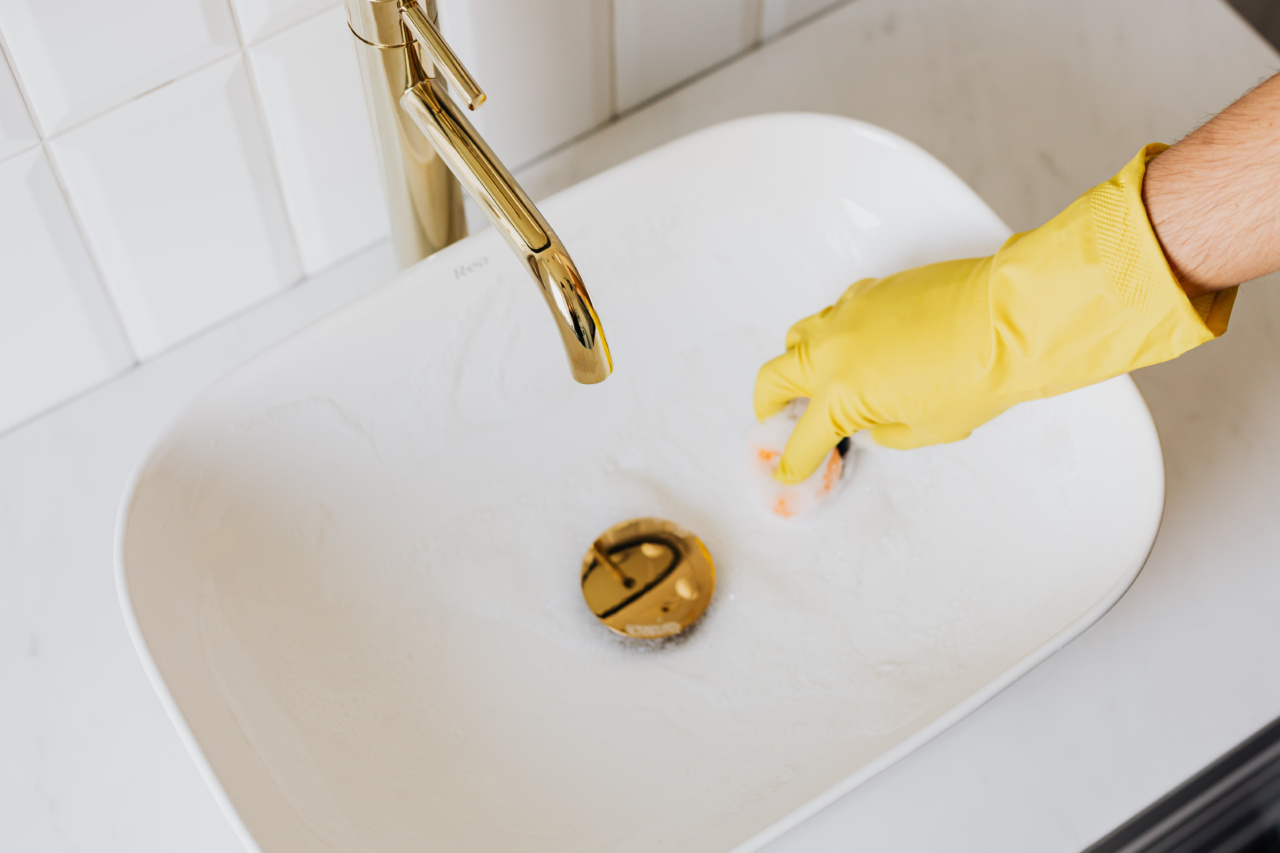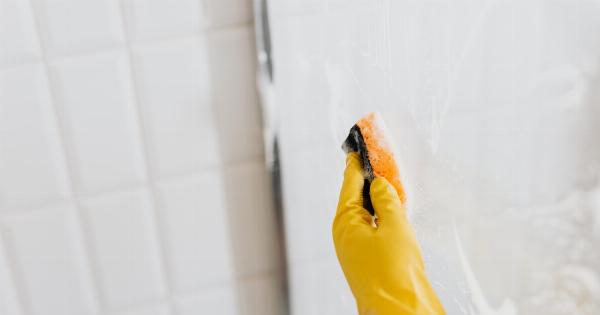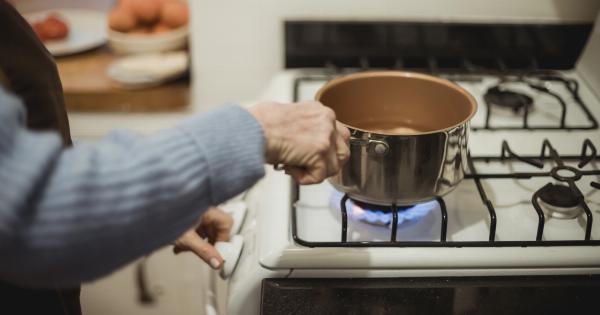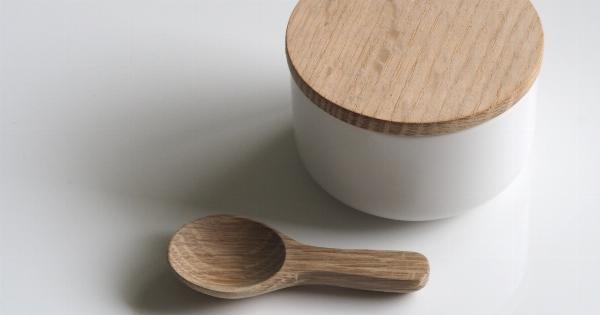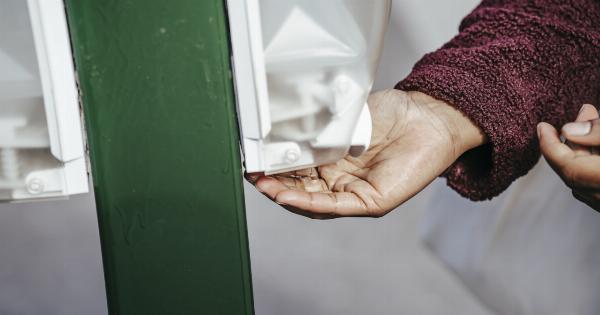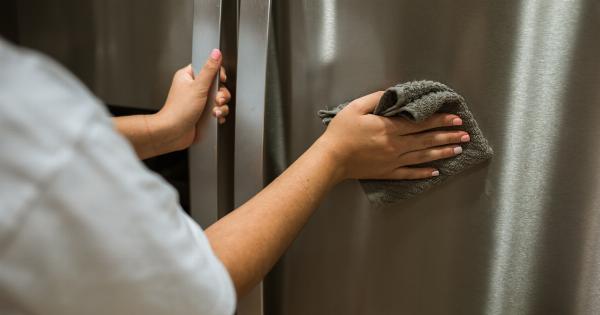Keeping your dish sponge clean and germ-free is essential for maintaining good hygiene in your kitchen. A dirty sponge can harbor bacteria and spread it onto your dishes, countertops, and utensils, potentially causing illness.
However, sanitizing your sponge regularly can help eliminate these harmful germs and extend the lifespan of your sponge.
Why is Sponge Sanitization Important?
Sponges are versatile cleaning tools commonly used in households and commercial kitchens. They are porous and tend to hold moisture, making them an ideal breeding ground for bacteria, mold, and mildew.
When you clean your dishes or countertops with a dirty sponge, you are essentially spreading germs all over. Therefore, it is crucial to sanitize your dish sponge often to maintain a clean and healthy kitchen environment.
1. Microwaving
One of the easiest ways to sanitize your dish sponge is to pop it in the microwave. Make sure the sponge is fully wet and then place it in the microwave for one minute on high heat. The heat generated will kill most of the bacteria present on the sponge.
Be cautious when removing the sponge, as it will be hot.
2. Boiling
Another effective method is to boil the sponge. Simply place the sponge in a pot of boiling water and let it boil for a few minutes. The hot water kills the bacteria, and any remaining contaminants will be removed when you wring out the sponge.
Let it cool down before using it again.
3. Bleaching
Bleaching the sponge can also help in killing the germs. Create a solution of one part bleach and nine parts water. Soak the sponge in the solution for about five minutes, then thoroughly rinse it with water to remove any bleach residue.
Make sure to wear gloves and work in a well-ventilated area when using bleach.
4. Vinegar Soak
Vinegar is a natural disinfectant and can be used to sanitize your dish sponge. Soak the sponge in a mixture of equal parts water and white vinegar for about 15 minutes. Rinse the sponge thoroughly with water to remove the vinegar smell.
5. Hydrogen Peroxide
Hydrogen peroxide is another effective sanitizer for dish sponges. Create a solution of equal parts water and hydrogen peroxide. Soak the sponge for about 10 minutes, then rinse it thoroughly before reusing.
6. Baking Soda Paste
Baking soda is known for its cleaning and deodorizing properties. Create a paste by mixing baking soda with a small amount of water. Apply the paste to your sponge and let it sit for a few minutes before rinsing it off.
This will help remove any odors and kill certain bacteria.
7. Salt Scrub
Salt acts as a natural exfoliant and can help sanitize your dish sponge. Wet the sponge and sprinkle some salt on it. Scrub the sponge vigorously for a few minutes, and then rinse it thoroughly.
The salt will help remove dirt and grime, leaving your sponge cleaner.
8. Lemon Soak
Lemons have natural antibacterial properties and can be used to sanitize your dish sponge. Squeeze the juice of one or two lemons into a bowl of water and soak the sponge in the mixture for about 10 minutes.
Rinse the sponge thoroughly to remove any lemon residue.
9. Tea Tree Oil Rinse
Tea tree oil is a natural disinfectant known for its antimicrobial properties. Add a few drops of tea tree oil to a bowl of water and soak the sponge in the mixture for about 10 minutes. Rinse the sponge well to remove any oil residue.
10. Dishwasher Cleaning
Your dishwasher can also help sanitize your dish sponge. Place the sponge on the top rack of your dishwasher and run a regular cycle with hot water. Make sure to avoid using any detergent or dish soap with the sponge to prevent unwanted suds.
11. Sunlight Exposure
UV rays from the sun have germ-killing properties, and you can utilize this natural method to sanitize your dish sponge. Place the damp sponge in direct sunlight for a few hours.
Make sure to turn the sponge over to ensure both sides are exposed to the sunlight.
12. Rubbing Alcohol Spray
Rubbing alcohol is an effective sanitizer and can help kill germs on your dish sponge. Fill a spray bottle with rubbing alcohol and spritz it all over the sponge. Allow the alcohol to evaporate before using the sponge again.
13. Essential Oil Soak
Essential oils like lavender, eucalyptus, or peppermint have natural antimicrobial properties. Add a few drops of your preferred essential oil to a bowl of water and soak the sponge for about 10 minutes. Rinse the sponge well to remove any oil residue.
14. Peroxide and Vinegar Soak
A combination of hydrogen peroxide and vinegar can create a highly effective sanitizing solution for your dish sponge. Mix equal parts of hydrogen peroxide and white vinegar in a bowl and soak the sponge for about 10 minutes.
Rinse the sponge well before using it again.
15. Salt and Vinegar Scrub
A mixture of salt and vinegar can help remove dirt, grime, and sanitize your dish sponge. Wet the sponge and sprinkle some salt on it. Scrub the sponge vigorously with vinegar for a few minutes, then rinse it thoroughly.
16. Lemon and Baking Soda Paste
Combine the cleaning power of lemons and baking soda to create a powerful sponge cleaner. Create a paste by mixing baking soda with freshly squeezed lemon juice. Apply the paste to your sponge and let it sit for a few minutes before rinsing it off.
17. Steam Cleaning
If you have a steam cleaner at home, it can also be a useful tool to sanitize your dish sponge. Run the steam cleaner over the sponge, ensuring that the steam reaches all areas of the sponge. This method effectively kills bacteria and removes any odors.
18. Dish Soap Disinfectant
Regular dish soap may not sanitize your sponge, but there are specially formulated dish soaps available that have disinfecting properties. Look for dish soaps that mention antibacterial or sanitizing on their labels.
Use these dish soaps to clean your sponge thoroughly.
19. H2O2 Soak
H2O2, or hydrogen peroxide, can effectively kill bacteria and sanitize your dish sponge. Create a solution of equal parts water and 3% hydrogen peroxide in a bowl. Soak the sponge in the solution for about 10 minutes, then rinse it well before reusing.
20. Milk Soak
Milk contains natural antimicrobial agents that can help sanitize your dish sponge. Simply soak the sponge in a bowl filled with milk for about 30 minutes. Rinse the sponge well afterward to remove any milk residue and let it air dry.
21. Antiseptic Mouthwash Rinse
Your antiseptic mouthwash can also double as a sponge sanitizer. Fill a bowl with mouthwash and soak the sponge in it for about 10 minutes. Rinse the sponge thoroughly to remove any residual mouthwash before using it again.
22. Bleach and Water Soak
A diluted bleach solution can effectively kill bacteria and germs on your dish sponge. Create a solution of one tablespoon of bleach for every quart of water. Soak the sponge in this solution for about five minutes, then rinse it thoroughly before using.
23. Ozone Water Rinse
If you have an ozone water system at home, this can be an excellent way to sanitize your dish sponge. Rinse the sponge under the ozone water for a few minutes to kill bacteria and remove any odors.
24. Steam Sterilization
If you own a pressure cooker with a steam function or a steam sterilizer, you can use it to sanitize your dish sponge. Place the wet sponge in the pressure cooker or sterilizer and run the steam cycle according to the manufacturer’s instructions.
25. Freezing
Certain bacteria cannot survive extreme cold temperatures, so freezing your dish sponge can be an effective way to sanitize it. Place your damp sponge in a freezer bag and freeze it for at least four hours.
Thaw the sponge completely and rinse it well before using.
26. Use Multiple Sponges
Using multiple sponges and rotating them regularly can help prevent the buildup of bacteria. Assign specific sponges for different tasks, such as one for dishes, one for countertops, and another for cleaning appliances.
27. Replace Regularly
No matter how well you sanitize your dish sponge, it will eventually wear out and become less effective at cleaning. Replace your sponge regularly, ideally every two to four weeks, to maintain a hygienic kitchen environment.
28. Dry Properly
Allowing your sponge to dry properly after each use can help prevent bacterial growth. Squeeze out excess water and place the sponge in a well-ventilated area or a sponge holder that allows for proper air circulation.
29. Avoid Cross-Contamination
Prevent cross-contamination by keeping your dish sponge separate from other cleaning tools and surfaces. Ensure that your sponge is used only for food-related tasks and not for cleaning other potentially contaminated areas.
30. Handwashing Hygiene
Practicing good handwashing hygiene before and after using a dish sponge is essential. Wash your hands with warm water and soap for at least 20 seconds, ensuring that you clean all areas thoroughly.
